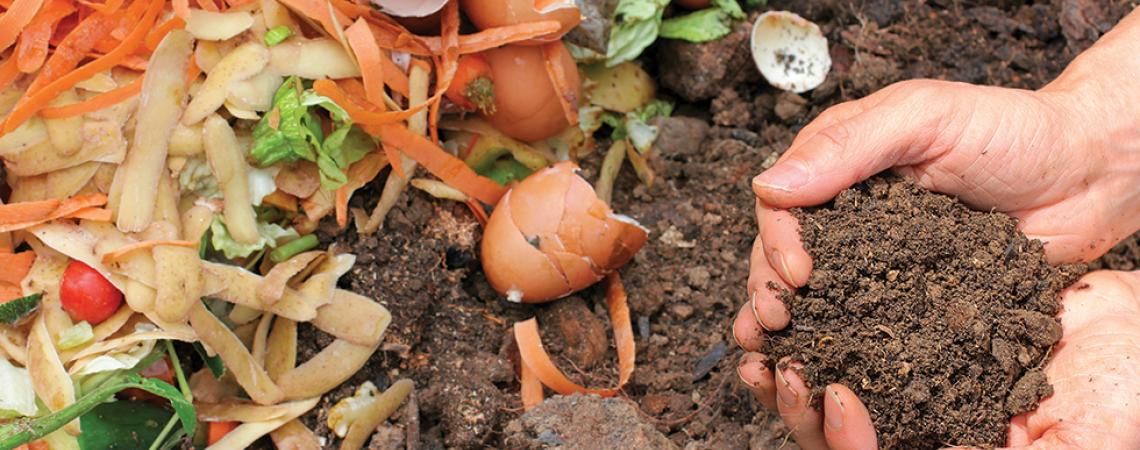Composting turns nonmeat, nonfat kitchen scraps and clean yard waste into rich, nutritions garden additive. (Credit: Getty Images)
Stop: Don’t toss out those nonmeat kitchen scraps.
By following the right techniques and combination of ingredients, you can have some of the best and least-expensive garden soil amendments.
“The secret to successful gardening is the quality of the soil you plant in, and when you amend your soil with compost, you’re improving your chances for a more productive garden,” says Joe Lamp’l, founder of joegardener.com and the television program Growing a Greener World, which is broadcast in many parts of the country. He also produces podcasts that air on JoeGardener.com and is a sought-after speaker at regional and national gardening symposiums and workshops. “Commercial soil amendments and organic material can be expensive, but when you can make your own out of kitchen scraps, grass clippings, and leaves, everyone wins. It’s really not that hard, and you can have fun in the process.”
Without getting too technical, compost is made from biodegraded organic matter. In the right proportions and conditions, bacteria, fungi, protozoa, earthworms, and arthropods (such as beetles and springtails) break down the materials. There are four basic ingredients to make compost: carbon (brown waste), nitrogen (green waste), air, and water.
“You don’t need any fancy equipment or tools to start a compost heap,” he says. “Just select an out-of-the-way spot — behind some shrubs or a far corner of your yard — and you can just begin putting the ingredients into a pile. Find an easy-to-access place with water nearby and you’re all set.”
If you want to contain the pile, build a three-sided wire cage, or tie three wooden pallets together with coat hangers. You can also order closed composting systems online or from garden centers. Your batches will be smaller than when using an open bin, but the results will be faster.
“Start with woody materials, branches, or sticks that will aid in ventilation, then layer brown, then green materials, using a formula of roughly two-thirds brown and one-third green,” Lamp’l says.
Examples of green materials, which have a higher nitrogen content, include fresh grass clippings, pulled weeds, and nonmeat, nonfat kitchen scraps such as vegetable and fruit peelings and cores, coffee grounds, and used tea leaves. Brown ingredients, those that furnish carbon that’s important to the decomposition process, include dried leaves, shredded cardboard or paper, and small wood chips. You can add a shovelful of garden soil or a handful of fertilizer such as 10-10-10 or Milorganite slow-acting fertilizer to speed up the process.
It’s important to keep the pile moist, with the consistency of a damp sponge, and regularly aerated. Also, make sure the ingredients added are not too big. As the pile decomposes, it creates heat that further breaks down the ingredients.
Some gardeners periodically cover the pile for a couple of weeks with black plastic garbage bags to hold in heat.
Composting can take two months to a year or more, depending on the ratio of brown to green ingredients, how often the pile is turned or aerated, how much heat is generated during the process, the size of the pile, and other conditions.
Adding compost to your garden will increase the level of nutrients and improve the texture of the soil.
“Once you’re started composting, using it in your garden and as top-dressing for your landscape, you’ll never go back,” Lamp’l says. “It’s one of the best ways to truly recycle and save money at the same time. And your gardening successes will improve.”
Pamela A. Keene is a freelance writer based in Atlanta.









